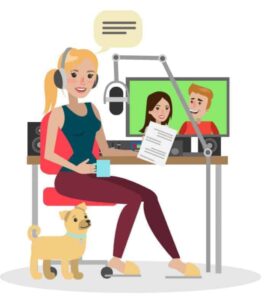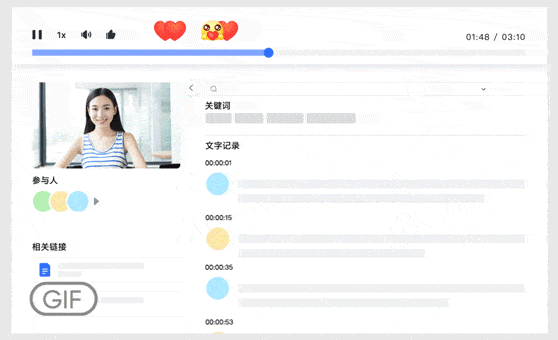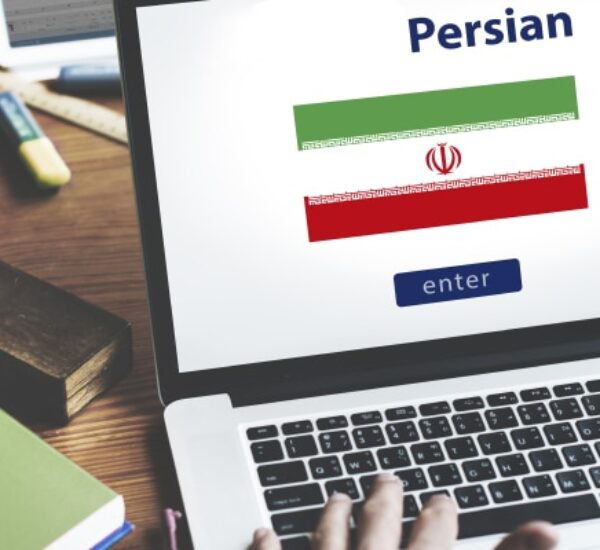Recently updated on February 21st, 2024 at 07:53 pm
The use of audio has been spurred on by the development of smartphones and smart speakers in recent years. According to Mordo Intelligence, The Audio Equipment Market was valued USD 12.13 billion in 2020, and it is expected to reach USD 17.01 billion by 2026, registering a CAGR of 5.9% during the forecast period (2021-2026).
Thus, the demand to translate Chinese audio to English has seen a significant increase over the last decade as the Chinese language is the second most widely spoken language in the world and the Asia Pacific is the largest market for audio equipment.
What is Audiovisual Translation?

Audiovisual translation, also known as AVT, is a highly specialized type of translation, which is growing in popularity in today’s digital world.
Similar to general translation, AVT translation requires some of the same skills but it also poses additional challenges.
For example, the subtitle translator must fit the translation into the time and space constraints posed by the video; whilst in voice over the length of the translation must be considered and match the original as closely as possible. And these are just a few challenges.
What Are the Main Types of Transcription?
There are different variations of transcription when it comes to translate Chinese audio to English. The following are the two main variations.
#1 True Verbatim Transcripts
#2 Intelligent Verbatim Transcripts
True verbatim transcription is a method of transcribing audio that records every single part of the dialogue, from pauses to “umm”s, stutters to false starts, and everything in between. Verbatim transcription converts speech to text exactly as it sounds, even in the case of an incorrect phrase or language selection, colloquialisms, and poor grammar.
The transcriber will leave out any redundant or unnecessary elements such as nervous stutters, false starts, etc. Any grammar or syntax errors will be corrected in the process, and the text will read well and be grammatically correct.
Samples
True Verbatim Transcripts
采访者:那我们先从自我介绍开始吧,你做什么样的工作,然后平时的话都有一些什么样的爱好?嗯,想到什么你都可以跟我们分享一下。
Interviewer: Let’s start the interview with a self-introduction. What do you do? Then, what do you like to do in your spare time? Um, you can share with us whatever comes to your mind.
女嘉宾:行,我叫(03:13),今年34岁。我在工商银行工作了10年差不多,后面的话因为小朋友出生了,因为要照顾他,所以说就辞职了。现在的话我是在保险公司啦,对,保险公司做销售,然后时间方面就相对要自由一些。
Interviewee: Ok, my name is (03:13), and I’m 34 years old. I’ve been working for the Industrial and Commercial Bank of China for nearly 10 years. When my child was born, because I had to look after him, so I quit my job. Now I’m working for an insurance company. Yes, as a sales representative in an insurance company, then the working schedule is more flexible.
Intelligent Verbatim Transcripts
采访者:那我们先从自我介绍开始吧,你做什么样的工作,平时的话都有一些什么样的爱好?想到什么你都可以跟我们分享一下。
Interviewer: Let’s start the interview with a self-introduction. What do you do? What do you like to do in your spare time? You can share with us whatever comes to your mind.
女嘉宾:行,我叫(03:13),今年34岁。我在工商银行差不多工作了10年,后面的话因为小朋友出生了,要照顾他,所以就辞职了。现在的话我是在保险公司做销售,时间方面相对要自由一些。
Interviewee: Ok, my name is (03:13), and I’m 34 years old. I’ve been working for the Industrial and Commercial Bank of China for nearly 10 years. When my child was born, I left my job to look after him. Now I’m working as a sales representative in an insurance company since the working schedule is more flexible.
Translate Chinese Audio to English: 2 Simple Steps
To translate Chinese audio to English, you need both transcription and translation if accuracy is the priority. This can be broken down into two steps.
Total Time: 2 days
-
Step 1: Transcribe

Transcribe the audio into Chinese texts. Depending on the preference, the transcription can be true verbatim transcript or intelligent verbatim transcript, with time references or without.
-
Step 2: Translate
Translate the Chinese scripts into English.
Frequently Asked Questions
Can Google translate Chinese audio to English text?
Yes, you can use the “translate by voice” feature of Google Translate, and translate Chinese audio to English text.
How can I transcribe Chinese Audio to English text with Google Translate?

1. Go to Google Translate APP
2. Select source language “Chinese”, and target language “English”
3. Start recording
4. Get your Chinese transcript and its English translation
How do I translate Chinese audio to English?
Translate Chinese audio to English with Chinese Copywriter in 4 easy steps:
1. Upload your video
2. Select target language “English”
3. Write your expected turnaround time
4. Receive your transcription
How long does it typically take to translate Chinese audio into English?
The length of time it takes to translate Chinese audio to English can vary widely depending on a number of factors, including the length of the audio, the complexity of the subject matter, and the availability of the translator.
Translate Chinese Audio to English with Chinese Copywriter
With Chinese Copywriter you get an experienced and motivated team of professional Chinese transcribers that work diligently to translate Chinese audio to English. Our project managers will assist you along the way.
You will get an all-inclusive, cost-effective, and hassle-free Mandarin transcription solution to translate Chinese audio to English accurately. From transcribing to translating, to creating English subtitles and graphically editing captions or on-screen text – we can do it all!
Transcription Example:
Transcription: 最后一次通知您,您有一封快件已派送两次,无人签收。如需查询请按1,如需查询请按1。
Translation: This is to inform you for the final time that you have a parcel which has been delivered twice but nobody received it. To learn more about it please press 1. To learn more about it please press 1.
💡 The above is a small transcription sample we did for a client. It seems quite fishy so we reminded the client to be aware of phone scams or parcel delivery scams.
Our Audio Transcription Style Guide
Timestamps
Timestamps should be in the following formats:
- Chinese: (hh:mm:ss)
- English: [hh:mm:ss]
Speaker Identification
- Do not use a speaker identification if there is only one speaker.
- If the speaker’s name is known, use the speaker’s full name as identification. Exceptions: If a speaker is identified by a title throughout, then use the title and last name. Examples: Professor Wang, Dr. Ma.
- For interviews, use “Interviewer” and “Interviewee” to identify the speakers. You may number the identification if there is more than one interviewer/interviewee.
- For training courses, lectures, instructional courses, etc., use “Instructor” as identification.
- For focus group recordings, identify the focus group leader as “Moderator” or “Facilitator”. Participants can be identified by name if their names are provided. Otherwise, use “Man” and “Woman” for identification. If there are several women and men, then number the speakers as “Man 1”, “Man 2”, “Woman 1”, “Woman 2”, or “Male 1”, “Male 2”, “Female 1”, and “Female 2”.
Spelling and Capitalization
- Be consistent in the spelling and capitalization of words throughout the transcript.
- Use spell-checking tools such as Grammarly for spell check but be aware that it might not catch all mistakes.
- Use client instructions, the internet, dictionaries, glossaries, style guides, etc. to verify the spelling of words, places, and technical terms.
- For places, names, and other words that you are not sure how to spell, use the mark [Place], [Name], etc.
Inaudible Speech
💡 Use an inaudible timestamp [inaudible hh:mm:ss] to indicate words or phrases you cannot hear or understand. Replace the “hh:mm:ss” with the timestamp of where the inaudible speech begins.
Interruptions and Incomplete Sentences
💡 Use periods plus spaces when there is a change of thought in the middle of a sentence, or the speaker doesn’t complete a sentence.
For example:
Interviewer: Tomorrow I’m going to… well, maybe I’m just…
Quotations
💡 Use non-curly quotes when the speaker is quoting something that was or is being said.
For example:
Female Speaker 2: I was going to the park, but my sister stopped me and said, “Let’s go shopping.”

Chinese Copywriter Team consists of talented linguists, project managers, localization engineers, and SEO experts. Since 2012, we have been providing translation, localization, and marketing services for various international businesses targeting the Chinese markets as well as Chinese businesses expanding their global reach.



